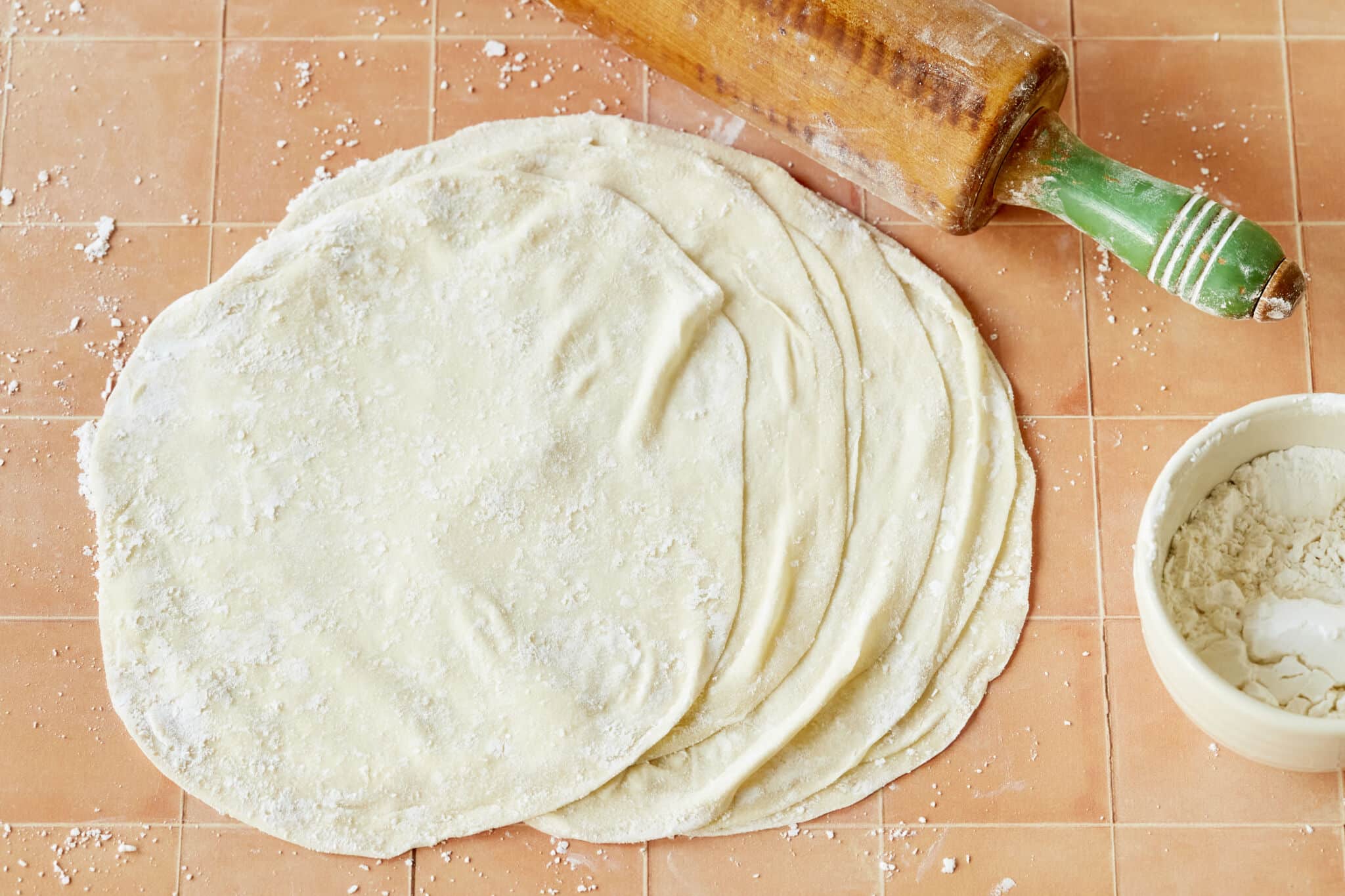
This post may contain affiliate links. Please see my full disclosure for details.
Hi Bold Bakers!
WHY YOU’LL LOVE THIS RECIPE: This Homemade Phyllo Dough Recipe unfolds the magic of crafting your filo pastry from scratch, promising the same exquisite taste and delicate texture as store-bought counterparts, all achieved through surprisingly easy methods.
Followed by my Easiest No Knead Baguette Recipe, Phyllo dough is absolutely another long-awaited fundamental to diversify your culinary repertoire. Moreover, this bold baking basic will also elevate your baking expertise. After extensive research and immersive practice, I’ve uncovered a simplified technique to assist you in effortlessly nailing the same.
Even when filo pastry is hard to come by, feel no more intimidated creating homemade phyllo dough for my Baklava, Quick and Easy Spanakopita Recipe, Greek Galaktoboureko, Petite Pumpkin Pies, and Perfect Traditional Apple Strudel Recipe!
Table of Contents
- What is Phyllo Dough (Filo Pastry)?
- Tools for Homemade Phyllo Dough (Filo Pastry)
- Key Ingredients for Homemade Phyllo Dough (Filo Pastry) and Why
- How to Make Phyllo Dough (Filo Pastry)
- How to Store Phyllo Dough (Filo Pastry)
- Can I Make Gluten-Free Phyllo Dough?
- Can I Make Phyllo Dough With Whole Wheat Flour?
- FAQs
- Gemma’s Pro Chef Tips
- More Bold Baking Basics
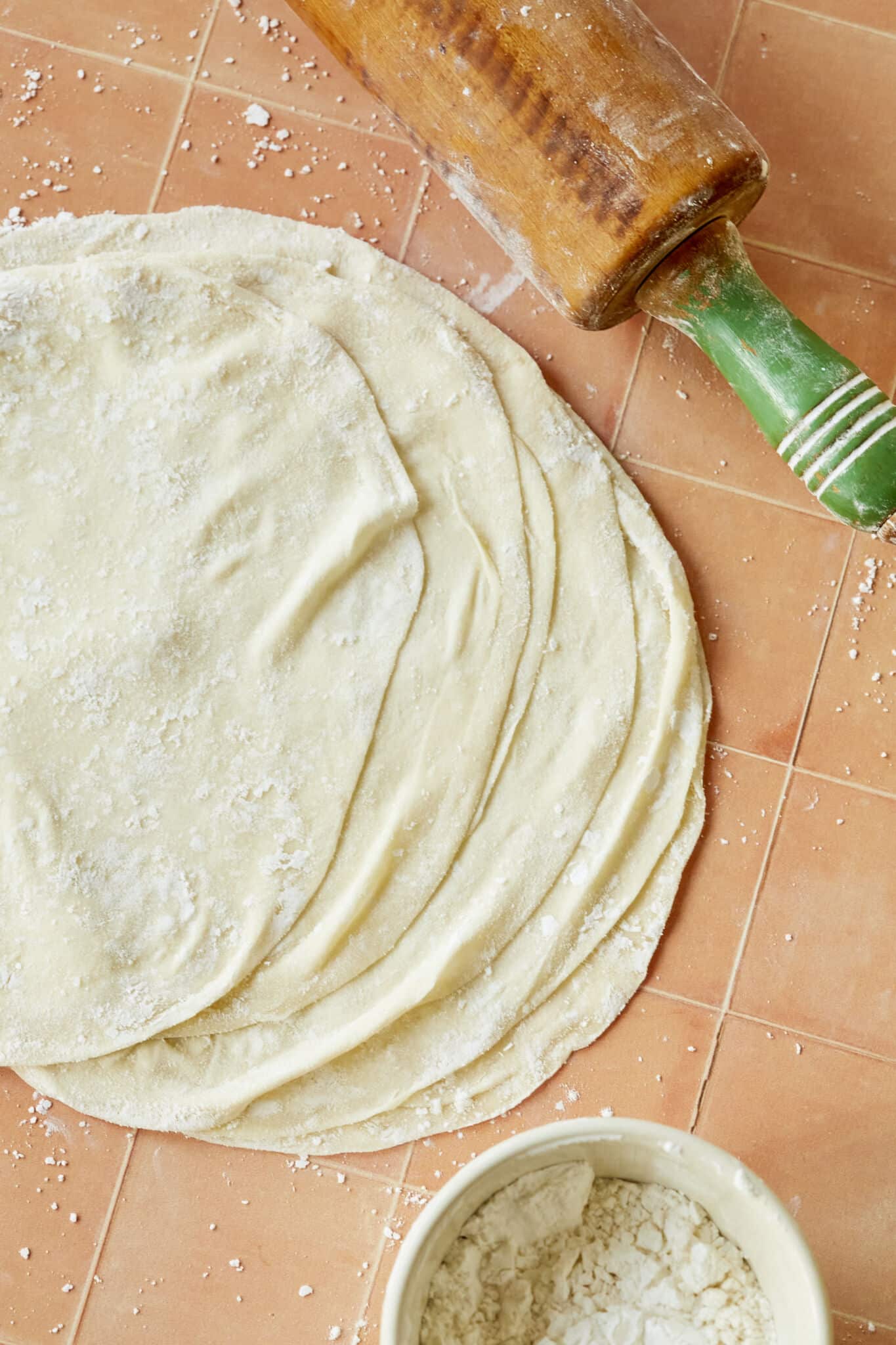
What is Phyllo Dough (Filo Pastry)?
Phyllo dough, also known as filo pastry, is a thin unleavened dough used for making pastries in various cuisines.
- It is made by rolling and stretching the dough until it becomes extremely thin. It is typically layered with melted oil or butter between each sheet to deliver a flaky and crisp texture when baked.
- The word “phyllo” comes from the Greek language, meaning “leaf”. The dough is traditionally associated with Greek and Turkish cuisines but is also used in many other Mediterranean dishes and Middle Eastern dishes.
- The resulting pastry is versatile and can be used for both sweet and savory dishes, such as Baklava, Quick and Easy Spanakopita, Greek Galaktoboureko, Petite Pumpkin Pies, and Perfect Traditional Apple Strudel Recipe.
Tools for Homemade Phyllo Dough (Filo Pastry)
- Measuring cups and measuring spoons
- Measuring jugs
- Glass mixing bowls
- Wire whisk
- Knife
- Rolling pin
- Parchment paper
- Cling wrap
Key Ingredients for Homemade Phyllo Dough (Filo Pastry) and Why
For the Dough
-
Bread flour
- Bread flour has a high protein content of 12%-14% to naturally and easily develop more gluten and retain more air, resulting in a stronger and more elastic phyllo dough.
-
Olive oil
- Olive oil provides more pliability to make it stretch without tearing.
- Moisture from olive oil contributes to the tenderness and flakiness of filo pastry.
- Moreover, olive oil aids in achieving a golden brown color.
-
Warm water
- Warm water ensures all ingredients are well mixed and evenly distributed.
- It also hydrates proteins and starches in bread flour, helping develop gluten and elasticity for filo pastry.
-
White vinegar
- White vinegar tenderizes the gluten, which prevents the phyllo (filo) from breaking and yields a flaky result.
- The acid in vinegar also reduces excessive browning during baking and preserves the color.
-
Salt
- Slat not only enhances the flavors and texture of filo pastry.
For Rolling
-
Cornstarch and all-purpose flour
- They prevent the dough from sticking to the surface and itself and help achieve even thickness.
How to Make Phyllo Dough (Filo Pastry)
-
Make the Dough:
- In a large mixing bowl, rub the oil into the flour until it resembles coarse breadcrumbs.
- In a small bowl, combine the water, vinegar and salt. Then add to the flour mixture and stir together until the dough comes together as a ball.
- Knead on a lightly floured surface for about 10 minutes. Wrap well and let rest at room temperature for two hours.
-
Make the Flour Mixture for Rolling:
-
-
In a small bowl, whisk the cornstarch and flour together. Set aside by a work surface.
-
Divide the dough into 20 equal portions and roll each into a ball.
-
Keep five balls of dough out and the rest under a clean tea towel to stay moist.
-
-
Roll the Dough:
-
-
Generously dust your work surface and roll the dough into a 5 inch (12 ½ cm) circle and dust with a bit more. Repeat with the remaining four balls of dough, stacking one on top of the other with flour in between.
-
Roll the stack of dough from 5 balls out to a circle about 8 inches (20 cm). Separate the layers, add more flour in between, restack and then roll out to a 10-12 inch circle (25-30 cm). The dough layers should be paper-thin and translucent.
-
Carefully pull apart the layers, dust a touch more flour in between, restack and place the dough stack between two pieces of parchment paper and roll up.
-
Wrap well in plastic wrap and refrigerate while you finish rolling the rest of the dough in this same manner.
-
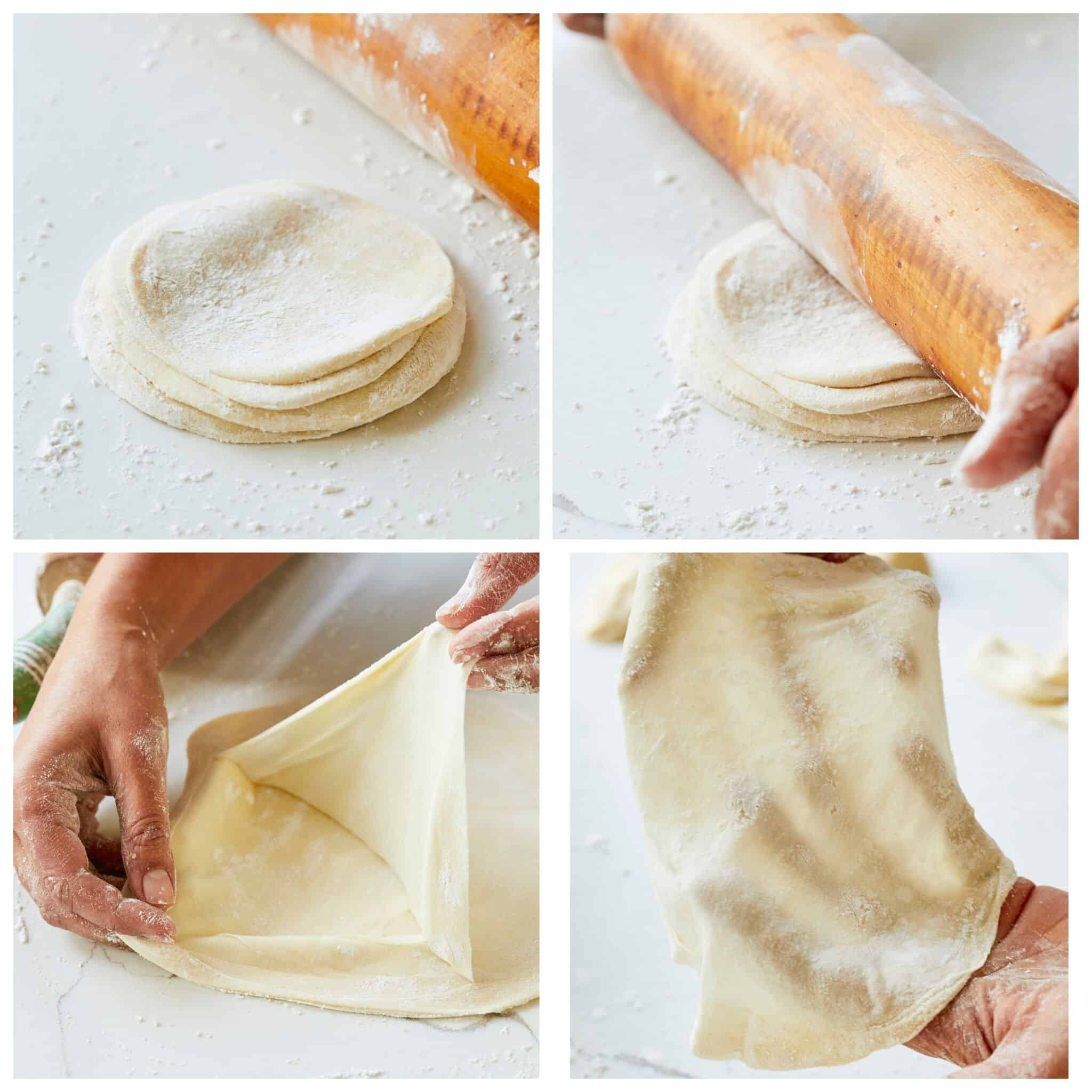
How to Store Phyllo Dough (Filo Pastry)
Store filo pastry well-wrapped in the refrigerator for up to 2 days, until ready to use. It can also be frozen for up to 4 weeks.
Can I Make Gluten-Free Phyllo Dough?
Yes, using an alternative gluten-free flour blend with psyllium husk, xanthan gum, or tapioca starch can create a gluten-free option.
Can I Make Phyllo Dough With Whole Wheat Flour?
Yes, you can substitute whole wheat flour for up to 50% bread flour, but the flavor will be nuttier and the texture will be slightly denser and coarser.
FAQs
-
How do I prevent phyllo dough from drying out during the process?
- Cover it with a damp cloth or plastic wrap during rolling to keep it moist.
-
Can I use a stand mixer to make filo pastry?
- While possible, hand-mixing filo pastry is often recommended for better control.
- Take care to avoid over-mixing if you choose to use a stand mixer.
- In a stand mixer fitted with a dough hook, add the olive oil and mix on low for 2 minutes, then add the remaining ingredients and mix on low for another 5 minutes, adding a touch of flour if the dough is too sticky to handle.
-
Can I use butter instead of oil for filo pastry?
Yes, you can use butter to make filo pastry.
-
- When substituting butter for oil, you’ll need to use melted butter in the same way as you would with oil in the recipe.
- Keep in mind that using butter may impart a slightly different taste and texture, but it can result in a delicious and flaky pastry.
-
Can I add herbs or spices to phyllo dough for flavor?
- Yes, adding herbs or spices can enhance the flavor of filo pastry.
-
How do I reheat dishes made with phyllo dough without losing crispiness?
Reheat filo pastry dishes in the oven at a low temperature to maintain crispiness.
-
- A temperature range of 300°F(150°C) to 350°F (180°C) is suitable for reheating. Place the pastries in a preheated oven and monitor closely to achieve the desired warmth without compromising the texture.
- Reheating time can vary depending on the size and thickness of the pastries, so check periodically to avoid overheating.
-
Can I make phyllo dough in a humid environment?
- Making filo pastry is challenging but possible in a humid environment. Note to dust with extra flour when necessary.
-
What’s the difference between phyllo dough and puff pastry?
- Both filo pastry and puff pastry contribute flakiness to dishes.
- They differ in their composition and preparation:
- Phyllo dough contains oil and vinegar which are not used in puff pastry in most recipes.
- Phyllo dough achieves its texture through thin layers of phyllo, while puff pastry relies on the laminated structure created by layers of butter and dough.
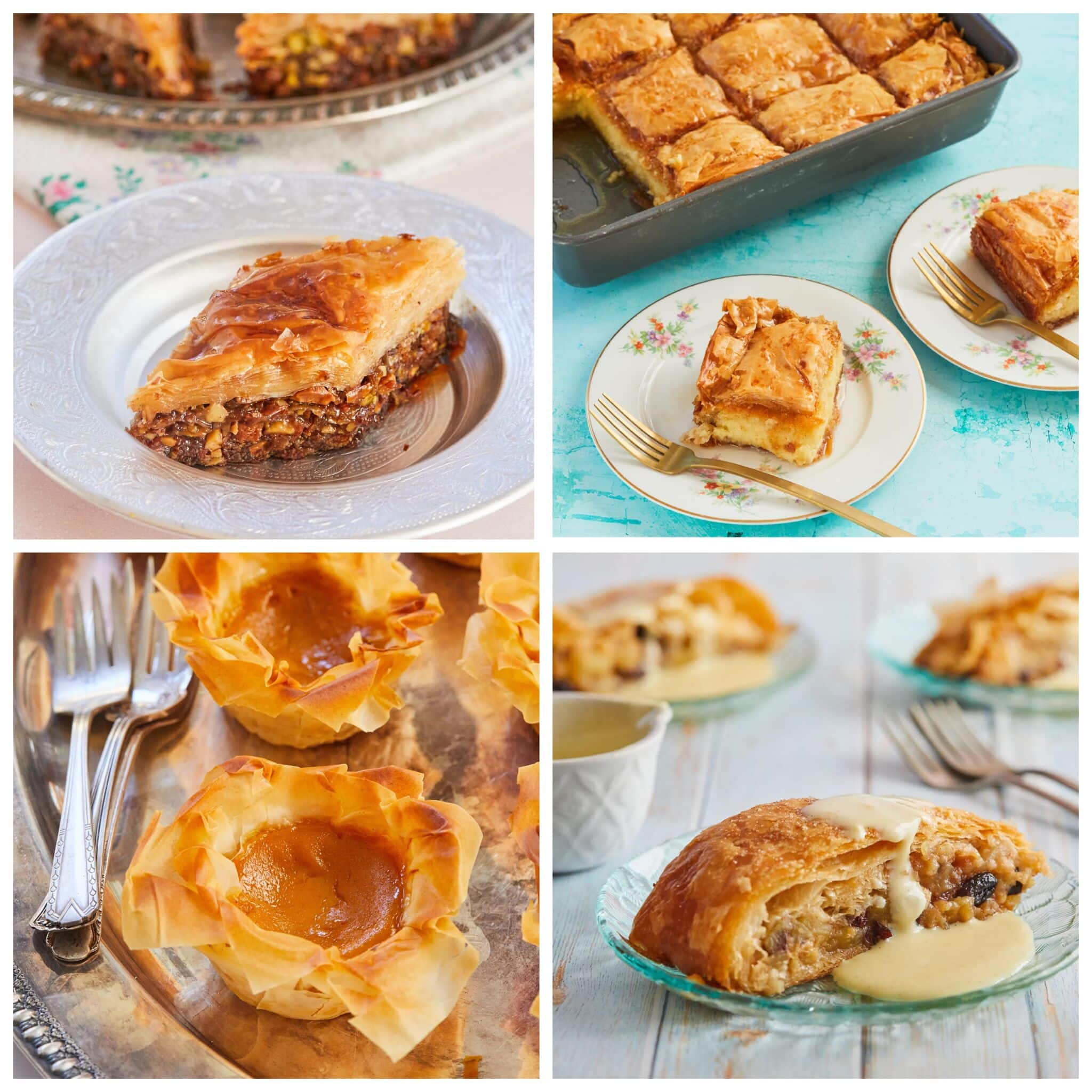
Gemma’s Pro Chef Tips
- Bread flour is ideal for this dough. However, you will also have success with all-purpose flour if that is all you get on hand.
- You can use any kind of vinegar for this dough, such as apple cider vinegar and wine vinegar.
- Be sure to flour the dough well with your cornflour mixture when rolling, especially if you live in a humid environment!
- To prevent a soggy bottom in dishes made with phyllo dough, you can blind-bake the phyllo dough for a few minutes before adding wet fillings to prevent sogginess.
- Roll the sheets of dough as evenly as possible. Sometimes the center can end up being thinner than the edges so this might take some practice. You got this!
More Bold Baking Basics
- Perfect Homemade Pie Crust
- Easiest Puff Pastry
- Pâte Sucrée Recipe (French Sweet Shortcrust Pastry)
- Choux Pastry
- Danish Pastry Dough
Watch The Recipe Video!
Homemade Phyllo Dough Recipe (Filo Pastry)
Ingredients
For the Dough
- 2 cups (10 oz/284 g) bread flour
- ⅓ cup (2 ½ fl oz/75 ml) olive oil
- ¾ cup (6 fl oz/180 ml) warm water
- 2 teaspoons white vinegar
- ½ teaspoon salt
For Rolling
- 1 cup (4 oz/115 g) cornstarch
- ¼ cup (1¼ oz/35 g) all-purpose flour
Instructions
Make the Dough
- In a large bowl, combine the flour and olive oil. Using your fingers, rub the oil into the flour until it resembles coarse breadcrumbs.
- In a measuring jug, combine the water, vinegar and salt. Pour in almost all the liquid, holding back a little just incase you don't need it all. Mix until the dough comes together to form a ball. If needed, add a little more liquid to bring it together.
- Transfer to a lightly floured surface and knead for about 10 minutes, adding a little flour if absolutely necessary to keep the dough from being too sticky. Wrap well and let rest at room temperature for two hours.
Make the Flour Mixture for Rolling
- In a small bowl, whisk the cornstarch and flour together. Set aside by a work surface.
- Divide the dough into 20 equal portions by first cutting the dough in half, then half each portion so you have 4 equal pieces. Divide each piece into five portions and roll each into a ball.
- Keep five balls of dough out and the rest under a clean tea towel to stay moist.
Roll the Dough
- Generously dust your work surface and a ball of dough with the flour mix. Roll the dough into a 5 inch (12 ½ cm) circle and dust with a bit more. Repeat with the remaining four balls of dough, stacking one on top of the other. Be sure to add flour in between the layers to stop them from sticking together.
- Keeping the dough stacked, roll out to a circle about 8 inches (20 cm). Separate the layers, add more flour in between, restack and then roll out to a 10-12 inch circle (25-30 cm). The dough layers should be paper thin and translucent.
- Carefully pull apart the layers, dust a touch more flour in between, restack and place the dough stack between two pieces of parchment paper and roll up. Wrap well in plastic wrap and refrigerate while you finish rolling the rest of the dough in this same manner.
- Store in the refrigerator for up to 2 days, until ready to use. It can also be frozen for up to 4 weeks.

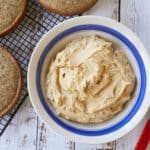
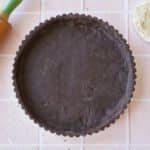
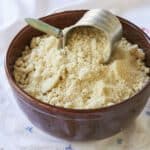
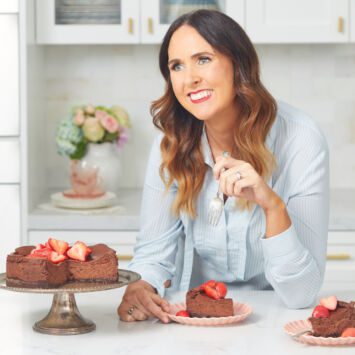


Hello Gemma!
Thank you for the wonderful recipes you are sharing.
I especially like to watch your videos since I am a visual person.
I will definitely try the Phyllo dough. Hopefully mine will be as successful as yours!
Proportions were way off for me – seemed like a lot of oil, especially compared to how the oil/flour mixture looked in the video for this recipe. When mixed together it was less like coarse breadcrumbs and more like wet sand. Then I used just over half the liquid and it was still too much, had to add extra flour to get back to a knead able dough consistency. Dough was very oily, and oil was leaking out after the initial rest. Managed to roll it out successfully, used about twice as much cornflour/flour mixture between the layers because of… Read more »
Hi Gemma , what an interesting method to have that thin layers. I Know Hungarian atrudels are having this phillo layers, but it xonaist of flour, water and salt. Which will be pulled by hands only ( dancing around the table ro make an even thinness hahaha)
Thank you, I will surely try rhis method
Thank you. I had no idea it was so easy to make. ❤️
Nothing! The measurements for the water and oil is way off. Also oil was leaking out of dough while resting on table, and when baked the rest leaked out on the pan. I made this for my son and myself hoping we can use a more healthy dough but it was worse than using the short crust pastry. I asked him what was the problem and he said “it tasted like oil”! I’ll stick to short crust pastry from Gordon Ramsey and just use less butter, and it’s less work too.
Hello Gemma, Can I sub cassava flour instead of using bread flour? I Love your recipes! Thank you
This is fab and better than any of the Greek cooks/chefs I have seen demonstrate this method. In Greece it is called Horiatiko phyllo which translates to ‘village pastry’. I have struggled for many years making this for my Spanakotiropitas but will defo give this a try Gemma. Bravo and Kali Orexi xx
I can’t wait to try this. Could I roll it as a square instead? And, if so, what sizes of square do I need to roll?
I would absolutely love to make this recipe. As you say in the piece, you can use gluten free flour, but I dont know….gf flour does not hold together in the way you were holding up your dough made with wheat….cal me a skeptic, but not sure it’ll work. I know you’re not a gf site, so I hate to present you with these issues. Maybe I could just roll them out one by one, but even the thought of picking it up with my fingers, I just know it’d rip apart.